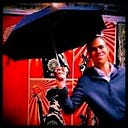I’ve blogged before about my user manual, a document that describes as much my motivations & goals as my preferred working styles. It’s a tool that can be used when supporting people through their personal development to focus as much on their professional identity and personality as their skills. This user manual can also be valuable for team members and managers to understand each other’s working styles and preferences, fostering better collaboration and team development.
How do you describe your professional identity?
- Ask five people to describe what you do well and how you work.
- Synthesise these and turn them into a statement that describes your professional identity.
Then, reflect in a 121 with your manager or team member. The manager’s role in this reflection is to provide constructive feedback and guidance on how the individual’s strengths and values align with the team’s mission and how they can further develop their professional identity.
- What strengths have other people noticed in you that you didn’t realise? What strengths do you have that other people haven’t noticed?
- What does this feedback from others suggest about your values and style?
- How could you develop your professional identity?
I’ve included this value in my user manual regarding the value I bring to teams.
I’ve also blogged about how you develop a mission statement for your team so you can best support your organisation.
Aligning personal development objectives with the team’s value proposition and objectives is crucial. This alignment ensures that each person’s contribution is meaningful and that they are developing in a way that contributes to the team’s impact. It also ensures that the team’s approach reflects the diverse personalities of its members, fostering a sense of connection and purpose.
This means that in people’s personal development, they should outline what their career goals are, what they want to achieve over the next 3–6–12 months to progress in those goals and to help the team progress in its goals, and what skills they need to consolidate, stretch and share. For instance, if the team aims to improve customer satisfaction, an individual’s personal development objective could be to enhance their communication skills to understand better and address customer needs.
To help people develop their career goals, you could ask:
- When you are at your best, what are you doing that helps people, how do you work, how do you collaborate with people?
- If you were in your ideal role, what would you do that helps people, how would you work, how would you collaborate with people?
- What experiences and skills do you need to be the best you could be?
For example, I’m at my best when I’m energising people from different teams to work together to tackle a complex challenge and put into practice creative solutions that have a visible impact on the ground and get other people to get involved and make that positive change.
In my ideal next role, I’m leading a service that brings together different teams & partner organisations with various skills who do that and show how you can deliver a visible impact on the ground and put in the building blocks to make change stick in a way that spreads across organisations and a local area.
To help people identify what their speciality is or could be:
Ask people:
- How would people describe the work you are especially good at doing?
- What skill are you particularly good at?
- What could you do to become the leader in that skill?
Then, ask people
- What type of work or skill must you developto support the team and build your career?
- What could you do to stretch yourself in that skill? How far out of your comfort zone could you go? What would happen if you went beyond your comfort zone?
Then, discuss when the team is or could be at its best. Use these individual conversations and synthesise them to have a team conversation about how the team could develop.
They also need to improve the day-to-day experience they have with the teams’ key customers:
- How do they help them?
- How do they sustain relationships with them?
- Who do they collaborate with to meet the need?
